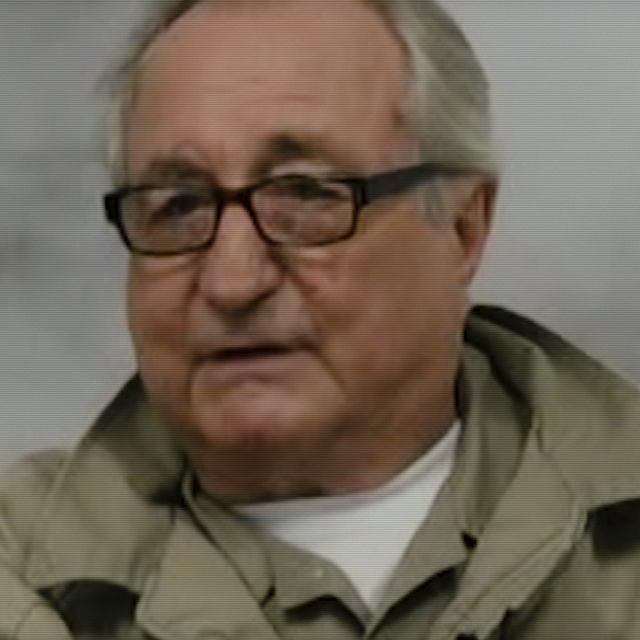Bankers and financiers haven’t exactly covered themselves in glory over the past few decades, and Hollywood has revelled in telling stories inspired by disgraced money men.
But there was one real-life businessman who likely had an influence on all of these besuited grifters: the late Bernie Madoff. He ran the biggest pyramid scheme of all time, a whopping $64 billion con that shattered the lives of countless individual investors who lost life savings, houses and other assets as a result.
Madoff ended up in jail, and that’s where he died in 2021, aged 82, serving just a few years of his 150 year sentence. Now, a Netflix documentary will examine his ruthless rise to power, how it all came together, and his downfall in Madoff: The Monster of Wall Street.
The four-part documentary film, helmed by Joe Berlinger, promises “unique access to whistleblowers, employees, investigators, and victims, and never-before-seen video depositions of Madoff himself,” as well as uncovering the “mechanics of Madoff's fraudulent investment advisory business, uncovering how the fraud was not just the brainchild of one evil genius, as many people came to believe.”
Who was Bernie Madoff?
Bernard “Bernie” Lawrence Madoff was born in Queens, New York, in 1938 and went on to graduate from Hofstra University in 1960. He toyed with the idea of being a lawyer, but in the same year, he took money he had earned from being a lifeguard and sprinkler installer to open up a penny stock brokerage called Bernard L. Madoff Investment Securities LLC, handling what are known as over-the-counter stocks as a third-party trader.
He got his father to invest in the business, and in a blueprint for the rest of his career, got friends and other family members to also chip in. His brother, Peter, was brought on as senior managing director; Peter’s daughter Shana also joined the firm, as did Bernie’s sons, Mark and Andrew.
What set Madoff apart from other traders was his early push to use computers for electronic trading on the exchange floor, when many still used the traditional system of human traders. According to The New York Times: “By the 1980s, his firm handled up to 5 percent of the trading on the New York Stock Exchange.” The publication also noted: “At one point, the firm was the largest market maker on the Nasdaq market, regularly operating as both a buyer and seller of many widely traded securities.”
The dodgy business
Madoff is believed to be one of the first prominent practitioners of payment for order flow, in which a dealer pays a broker for the right to carry out a customer’s order, also known as a ‘kickback’.
This was wildly successful and earned Madoff a lot of money. But then he began a pyramid scheme (known as a Ponzi scheme in the US) in his wealth management company.
He promised investors a great return on any investments with him, but when they deposited the cash, he placed it in his own personal bank account. He then took money from other new investors to give to the previous investors as proof of how well their money was doing with him, and gave them fabricated statements breaking down their investment’s growth.
In the meantime, Madoff handily became chairman on the board of directors of the self-regulatory body, National Association of Securities Dealers. In what would appear to be a conflict of interests, he also became chair of the Nasdaq in 1990, and also served in 1991 and 1993. This was a case of hiding in plain sight.
In 2008, however, evidence of his illicit dealings began to come to life. The economic crash led investors to need to cash out on their business with Madoff, and he simply didn’t have the money to cover it. It’s claimed that of $7 billion worth of requested withdrawals, Madoff only had a few hundred million.
The scam went undetected for years, and some people claim it dates all the way back to the Seventies (though Madoff claimed it was only from the Nineties). And despite some whistleblowers first flagging Madoff’s fraud with the U.S. Securities and Exchange Commission (SEC) back in 1992, and the SEC investigating several times, they initially failed to uncover anything.
Speaking with the journalist Steve Fishman on his podcast When Madoff Calls, Madoff told him that there was no real reason why he moved into the illegal side of trading: “I had more than enough money to support any of my lifestyle and my family's lifestyle. I didn't need to do this for that… I don't know why.”
There are also questions about who else was profiteering from the scheme. Madoff later told Fishman: “I just allowed myself to be talked into something and that's my fault. I thought I could extricate myself after a period of time. I thought it would be a very short period of time, but I just couldn't.”
The arrest and sentencing
In December 2008, presumably as he saw no other way out, he confessed his wrongdoing to his sons, Mark and Andy, who worked at his firm. The following day, they turned him over to the authorities, and Madoff always claimed that his sons were not aware of his scheme.
Madoff was arrested a few days later, and following a court case, plead guilty and was convicted of 11 federal felony counts, including securities fraud, wire fraud, mail fraud, perjury, and money laundering and was sentenced in 2009 to 150 years in jail. The US government offered to pay out up to $7 million to defrauded investors, but this fell way short of the billions of dollars actually needed to cover all their earnings. He passed away in 2021.














